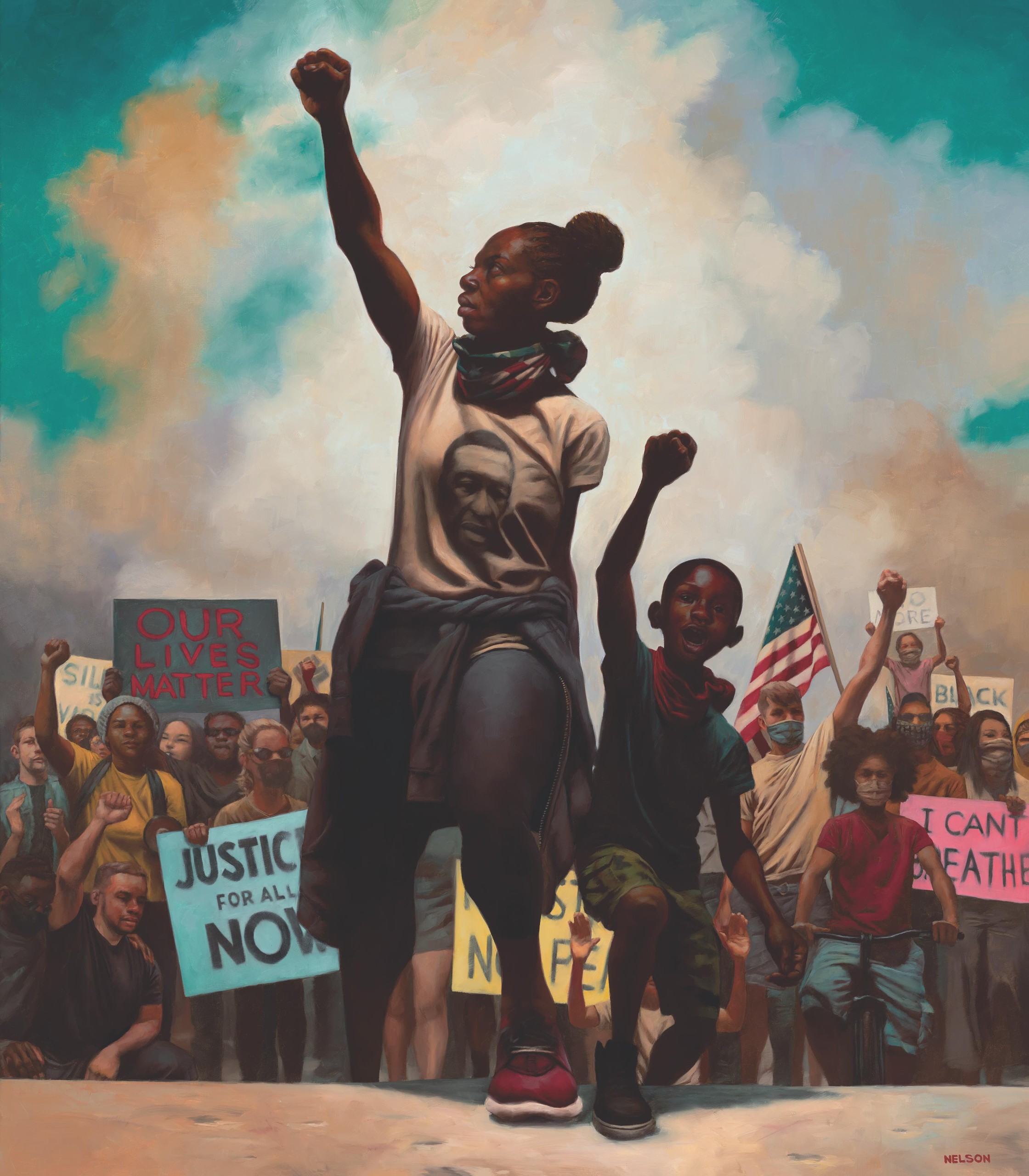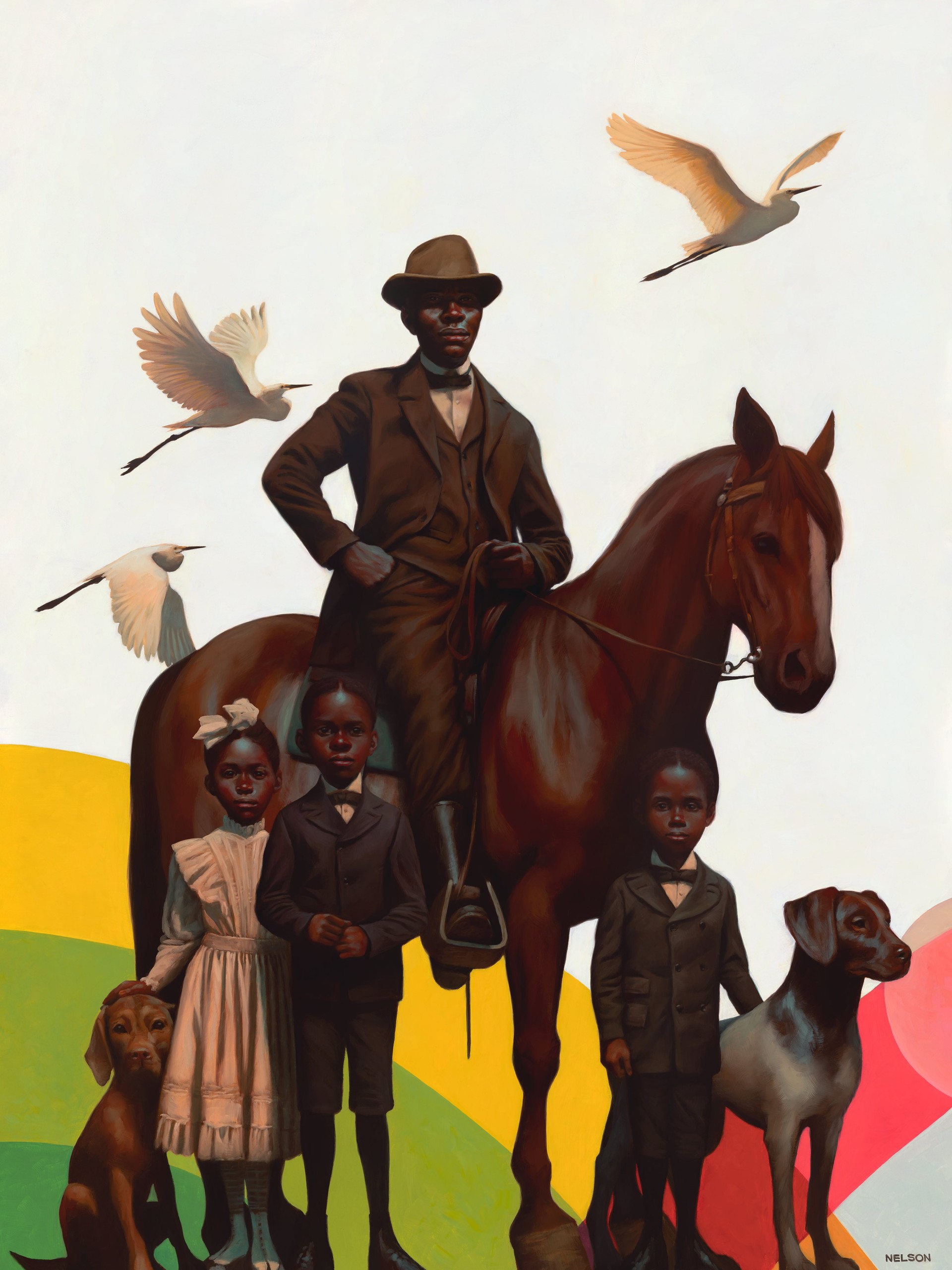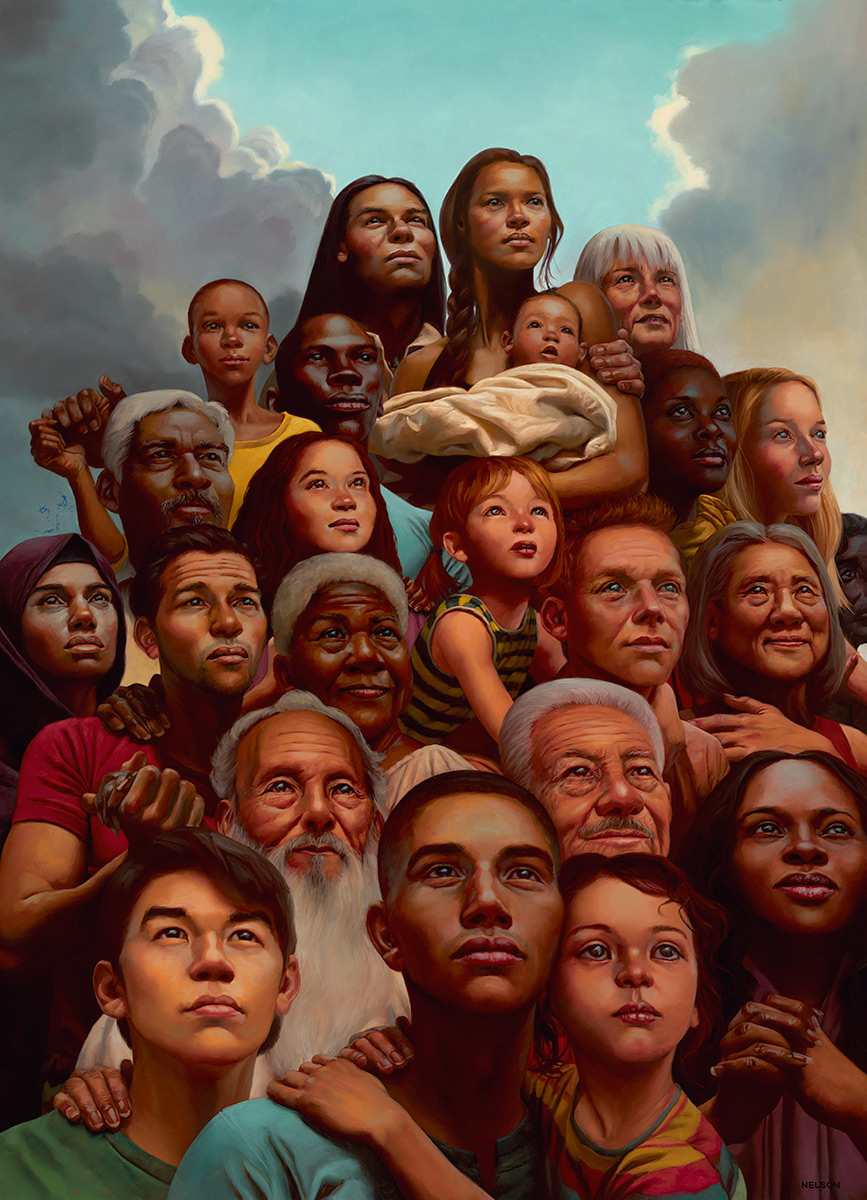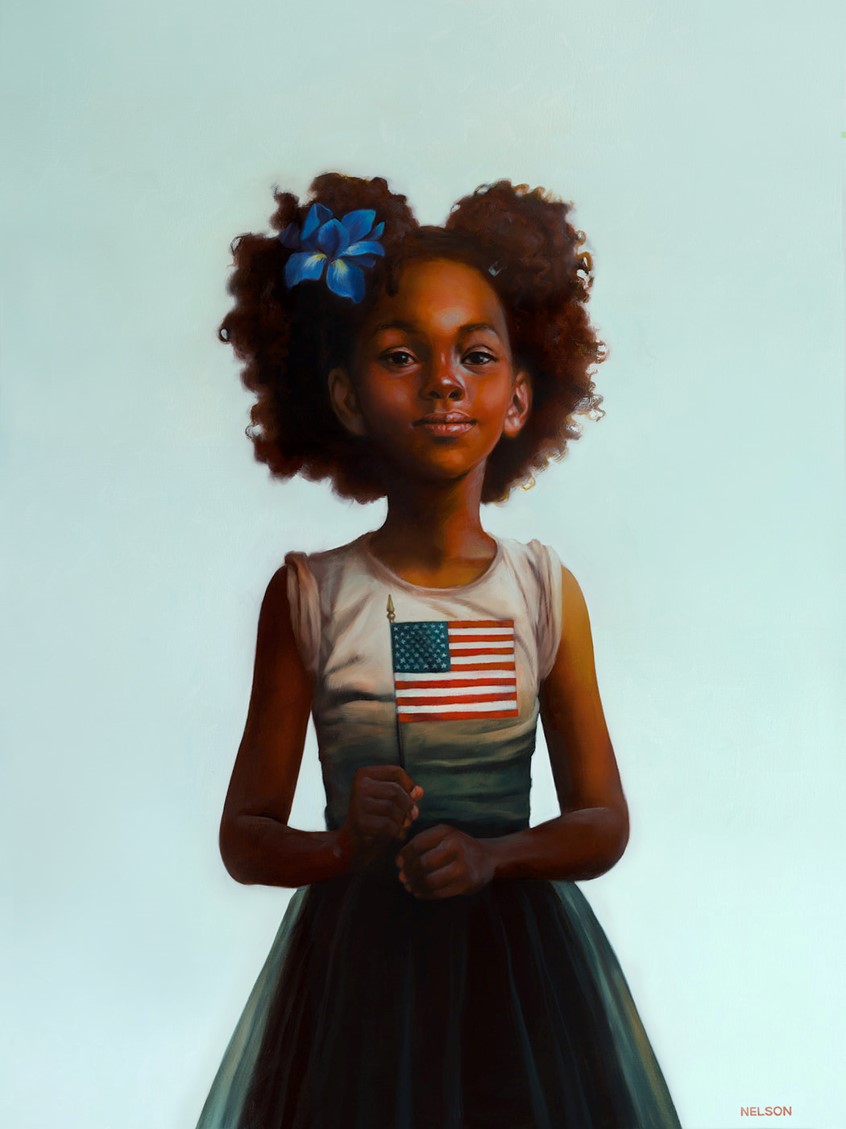Kadir Nelson painted the human drama we collectively lived through during the pandemic
Now on view at the Norman Rockwell Museum
July 22, 2022
By Jennifer Huberdeau, The Berkshire Eagle Read Full Article: The Berkshire Eagle
Plan your visit to see IN OUR LIFETIME and
IMPRINTED: Illustrating Race today.
STOCKBRIDGE — A fist raised high in the air, a foot planted firmly on the step in front of her, the woman at the center of “American Uprising” — wearing a T-shirt with an image of George Floyd and an American flag scarf around her neck — urges the crowd of protestors behind her to follow.
It’s a moment etched in time — of unity, of a movement to end systemic racism toward African Americans — a Black Lives Matter protest.
In this modern work, a 2020 cover illustration for Rolling Stone magazine, Kadir Nelson references Eugéne Delacroix’s 19th-century masterpiece of a time of protest, “Liberty Leading the People,” a commemoration of the French Revolution. Instead of Liberty leading the charge, Nelson’s central figure, posed similarly, is an African American woman, symbolic of those (mostly) women who spearheaded the Black Lives Matter movement. Behind her, a diverse crowd of protesters emerges from billowing clouds, holding signs calling for justice.


“American Uprising” is part of “In Our Lifetime: Paintings from the Pandemic,” a show of illustrations by Nelson, on view at the Norman Rockwell Museum through Oct. 30. The exhibition is a companion piece to “Imprinted: Illustrating Race.”
“This body of work, ‘In Our Lifetime,’ serves as an artistic and historical document of the human drama we collectively lived through during the pandemic; and I’m very honored to share the walls of the Norman Rockwell Museum with one of my favorite artists and inspirations, Norman Rockwell,” Nelson said in a statement.
“Kadir is one of the most prominent illustrators working today,” said Stephanie Haboush Plunkett, deputy director/chief curator, during a recent interview at the museum. “He does a lot of work for The New Yorker, has illustrated over 30 children’s picture books and recently won the Caldecott Medal for a children’s picture book focusing on African American heroes.
“This is a collection of work that he did during the pandemic, when he was doing a range of things; some very serious and important works such as “Say their Names,” inspired by the unfortunate killing of George Floyd.”
Other works are inspired by popular culture, such as a commissioned work featuring the cast of “Blackish,” while still others, painted during the pandemic, mark important historical events, including “The Centennial,” celebrating the 100th anniversary of the Negro Baseball League, and “Tulsa,” a cover illustration for National Geographic, which tells the story of the tragic events of 1921 that fell upon Greenwood, the affluent African American district of Tulsa, Okla., events that were later named The Tulsa Race Massacre.

Of particular interest to Rockwell fans will be, “After the Storm,” “a celebration of humanity, determination, faith, and solidarity. ”
Based on Rockwell’s “Golden Rule,” the painting is filled with faces of all humankind. Together, the group lifts their faces upwards, hope visible in their eyes, as they look to the future.
Hope is a prevalent theme in the show, despite some of the more somber moments.
Hope is especially present in works such as “Distant Summer,” in which a young child, crouching, enjoys a red, white and blue ice pop. He stares directly back at the viewer, as if challenging them — challenging them to remember the summer of 2020, a summer plagued by pandemic lockdowns and social distancing, a summer filled with protests and social change. And then, challenging the viewer even more — to sit with him, in this moment of calm, to imagine a much better future.




Plan your visit to see IN OUR LIFETIME and IMPRINTED: Illustrating Race today.



